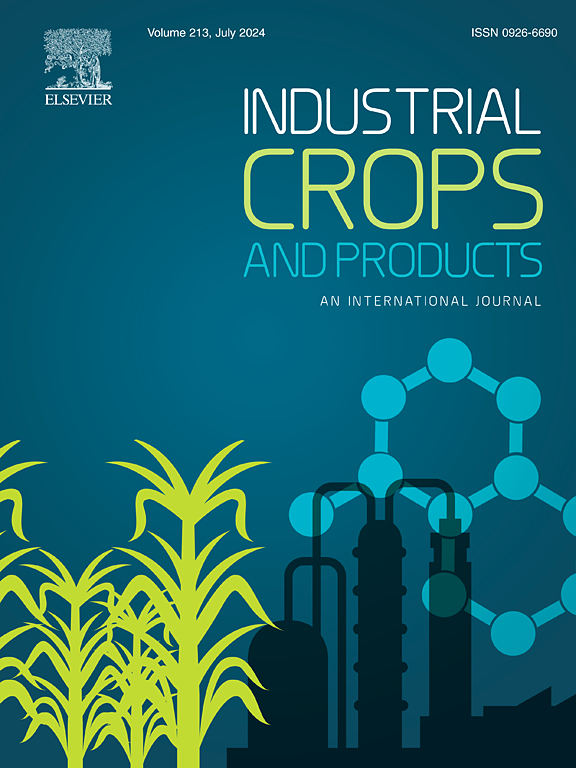多组学揭示了木犀草种子萌发的分子机制
IF 5.6
1区 农林科学
Q1 AGRICULTURAL ENGINEERING
引用次数: 0
摘要
木犀草(Podophyllum hexandrum)是一种濒危药用植物,其种子休眠性强,发芽率低、滞后时间长、发芽不均匀,对自然和人工繁殖都构成了挑战。在前人研究的基础上,采用三因素五水平的正交试验,结合冷分层和植物生长调节剂处理,促进六味子种子萌发。结果表明,在赤霉素酸处理的23组处理条件下,发芽率高达96.7 %,萌发时滞为9 d。为了阐明分子机制,我们重复这些条件,从第0天开始每隔9天收集10个样本进行转录组和代谢组分析(5个实验组和5个对照组)。通过代谢组检测,共鉴定出59种代谢物。转录组分析揭示了78,827个差异基因,这些基因与植物不同萌发阶段激素的合成、调控和转导密切相关。联合分析确定了23个共表达的代谢途径。加权基因共表达网络分析(WGCNA)鉴定了与感兴趣的植物激素调控相关的红色和黄绿色模块,并确定了中心基因:Cluster-114934.0和Cluster-114733.0。在本系统研究中,我们全面筛选了促进六面草种子萌发的技术方法,并深入分析了这种处理诱导萌发的分子机制。本研究结果为六合欢的人工繁殖提供了坚实的理论基础和技术支持。本文章由计算机程序翻译,如有差异,请以英文原文为准。
Multi-omics reveal the molecular mechanism promoting the seed germination of Podophyllum hexandrum
Podophyllum hexandrum is an endangered medicinal plant which seeds exhibit strong dormancy, posing challenges in natural and artificial propagation due to low germination rates, long time lags, and uneven germination. Building upon previous research, we conducted an orthogonal experiment with three factors and five levels, combining cold stratification and plant growth regulator treatment, to promote the germination of P. hexandrum seeds. The results indicated that under the treatment conditions of Group 23 in the gibberellic acid treatment, the germination rate reached as high as 96.7 %, with a germination time lag of 9 days. To elucidate the molecular mechanism, we repeated these conditions and collected 10 samples at 9-day intervals starting from day 0 for transcriptome and metabolome analysis (Five experimental groups and five control groups). Through metabolome detection, a total of 59 metabolites were identified. Transcriptome analysis revealed 78,827 differential genes, closely related to the synthesis, regulation, and transduction of plant hormones at different germination stages. Combined analysis identified 23 co-expressed metabolic pathways. Weighted Gene Co-expression Network Analysis (WGCNA) identified red and yellow-green modules related to the regulation of plant hormones of interest and pinpointed hub genes: Cluster-114934.0 and Cluster-114733.0. In this systematic study, we comprehensively screened technical methods to promote the germination of P. hexandrum seeds and deeply analyzed the molecular mechanism underlying this treatment-induced germination. Our findings provide a solid theoretical foundation and technical support for the artificial propagation of P. hexandrum.
求助全文
通过发布文献求助,成功后即可免费获取论文全文。
去求助
来源期刊

Industrial Crops and Products
农林科学-农业工程
CiteScore
9.50
自引率
8.50%
发文量
1518
审稿时长
43 days
期刊介绍:
Industrial Crops and Products is an International Journal publishing academic and industrial research on industrial (defined as non-food/non-feed) crops and products. Papers concern both crop-oriented and bio-based materials from crops-oriented research, and should be of interest to an international audience, hypothesis driven, and where comparisons are made statistics performed.
 求助内容:
求助内容: 应助结果提醒方式:
应助结果提醒方式:


